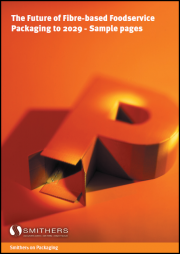
|
시장보고서
상품코드
1737028
세계의 푸드서비스 포장 시장 규모, 점유율, 성장 분석, 재료별, 포장 유형별, 용도별, 지역별 - 산업 예측(2025-2032년)Food Service Packaging Market Size, Share, and Growth Analysis, By Material (Plastic, Metal), By Packaging Type (Paper & Paperboard, Flexible), By Application, By Region - Industry Forecast 2025-2032 |
||||||
푸드서비스 포장 세계 시장 규모는 2023년 1,302억 달러, 2024년 1,365억 8,000만 달러에서 2032년까지는 2,002억 6,000만 달러로 성장할 것으로 예측되며, 예측 기간(2025-2032년) CAGR은 4.9%를 나타낼 전망입니다.
세계 푸드서비스 포장 시장은 식음료 부문 수요 증가와 이동 중 소비가 급증함에 따라 강력한 성장세를 보이고 있습니다. 주요 촉진요인으로는 도시화, 라이프스타일의 변화, 음식 배달 서비스의 급격한 증가 등이 있습니다. 플라스틱 폐기물 감소에 대한 소비자와 규제 당국의 관심이 높아짐에 따라 환경적으로 지속 가능하고 재활용 가능한 포장재로 전환하는 추세가 두드러지게 나타나고 있습니다. 업계 리더들의 포장 기술 혁신과 친환경 소재의 통합은 향후 시장 역학에 영향을 미칠 태세를 갖추고 있습니다. 그러나 이해관계자들은 규제, 비용 변동, 폐기물 관리와 관련된 과제를 극복해야 합니다. 재료 과학의 끊임없는 발전은 제품의 유통기한과 식품 안전성을 향상시키고, 신선하고 고품질의 음식을 찾는 소비자의 선호도 변화에 대응하여 시장 진출기업에게 유리한 기회를 제공합니다.
목차
서론
- 조사 목적
- 조사 범위
- 정의
조사 방법
- 정보 조달
- 2차와 1차 데이터 방법
- 시장 규모 예측
- 시장 전제조건과 제한
주요 요약
- 세계 시장 전망
- 공급과 수요 동향 분석
- 부문별 기회 분석
시장 역학과 전망
- 시장 개요
- 시장 규모
- 시장 역학
- 성장 촉진요인과 기회
- 성장 억제요인과 과제
- Porter의 Five Forces 분석
주요 시장 인사이트
- 주요 성공 요인
- 경쟁 정도
- 주요 투자 기회
- 시장 생태계
- 시장의 매력 지수(2024년)
- PESTEL 분석
- 거시경제 지표
- 밸류체인 분석
- 가격 분석
- 사례 연구
- 고객 구매 행동 분석
푸드서비스 포장 시장 규모 : 재료별·CAGR(2025년-2032년)
- 시장 개요
- 플라스틱
- 폴리에틸렌
- 폴리아미드
- 에틸렌 비닐 알코올
- 금속
- 기타
푸드서비스 포장 시장 규모 : 포장 유형별·CAGR(2025년-2032년)
- 시장 개요
- 종이 및 판지
- 연포장
- 경질 포장
- 기타
푸드서비스 포장 시장 규모 : 용도별·CAGR(2025년-2032년)
- 시장 개요
- 음료
- 과일 및 채소
- 베이커리 및 제과
- 유제품
- 기타
푸드서비스 포장 시장 규모·CAGR(2025년-2032년)
- 북미
- 미국
- 캐나다
- 유럽
- 독일
- 스페인
- 프랑스
- 영국
- 이탈리아
- 기타 유럽
- 아시아태평양
- 중국
- 인도
- 일본
- 한국
- 기타 아시아태평양
- 라틴아메리카
- 브라질
- 기타 라틴아메리카
- 중동 및 아프리카
- GCC 국가
- 남아프리카
- 기타 중동 및 아프리카
경쟁 정보
- 주요 5개사 비교
- 주요 기업의 시장 포지셔닝(2024년)
- 주요 시장 기업이 채택한 전략
- 최근 시장 동향
- 기업의 시장 점유율 분석(2024년)
- 주요 기업 개요
- 기업 상세
- 제품 포트폴리오 분석
- 기업 부문별 점유율 분석
- 매출 전년대비 비교(2022년-2024년)
주요 기업 개요
- Amcor Limited
- Ball Corporation
- Berry Plastic Corporation
- BSI Biodegradable Solutions
- DS Smith PLC
- Excellent Packaging & Supply
- Huhtamaki OYJ
- ISAP Packaging SPA
- London Bio Packaging
- Reynolds Group Holding
- Sabert Corporation
- Sealed Air Corporation
- The DOW Chemical Company
- Westrock Company
결론과 제안
LSH 25.06.13Global Food Service Packaging Market size was valued at USD 130.2 billion in 2023 and is poised to grow from USD 136.58 billion in 2024 to USD 200.26 billion by 2032, growing at a CAGR of 4.9% during the forecast period (2025-2032).
The global food service packaging market is witnessing robust growth fueled by heightened demand from the food and beverage sector and the burgeoning trend of on-the-go consumption. Key drivers include urbanization, evolving lifestyles, and a proliferation of food delivery services. There is a notable shift towards environmentally sustainable and recyclable packaging, reflecting the increasing consumer and regulatory focus on reducing plastic waste. Innovations in packaging technology and the integration of eco-friendly materials by industry leaders are poised to influence future market dynamics. Nonetheless, stakeholders must navigate challenges related to regulations, cost fluctuations, and waste management. Continuous advancements in materials science are enhancing product shelf life and food safety, catering to evolving consumer preferences for fresh, high-quality meals, thus presenting lucrative opportunities for market participants.
Top-down and bottom-up approaches were used to estimate and validate the size of the Global Food Service Packaging market and to estimate the size of various other dependent submarkets. The research methodology used to estimate the market size includes the following details: The key players in the market were identified through secondary research, and their market shares in the respective regions were determined through primary and secondary research. This entire procedure includes the study of the annual and financial reports of the top market players and extensive interviews for key insights from industry leaders such as CEOs, VPs, directors, and marketing executives. All percentage shares split, and breakdowns were determined using secondary sources and verified through Primary sources. All possible parameters that affect the markets covered in this research study have been accounted for, viewed in extensive detail, verified through primary research, and analyzed to get the final quantitative and qualitative data.
Global Food Service Packaging Market Segments Analysis
Global Food Service Packaging Market is segmented by Material, Packaging Type, Application and region. Based on Material, the market is segmented into Plastic, Metal and Others. Based on Packaging Type, the market is segmented into Paper & Paperboard, Flexible, Rigid and Others. Based on Application, the market is segmented into Beverages, Fruits & Vegetables, Bakery & Confectionery, Dairy Products and Others. Based on region, the market is segmented into North America, Europe, Asia Pacific, Latin America and Middle East & Africa.
Driver of the Global Food Service Packaging Market
The global food service packaging market is primarily driven by the increasing demand for convenience and on-the-go meal options. As urbanization progresses and lifestyles become busier, consumers are increasingly seeking quick and hassle-free dining solutions. Food service packaging plays a vital role in enabling restaurants, cafes, and fast-food chains to offer meals, snacks, and beverages that are both portable and hygienic. Furthermore, the surge in food delivery services has heightened the need for effective and secure packaging solutions that maintain food quality during delivery, reinforcing the overall growth of the food service packaging sector.
Restraints in the Global Food Service Packaging Market
The global food service packaging market faces significant challenges due to environmental concerns. The widespread reliance on single-use plastics, foam containers, and non-biodegradable materials in food packaging has led to increased pollution and waste issues. Both consumers and governments are advocating for more sustainable, eco-friendly packaging alternatives to mitigate environmental impact. Consequently, food service providers and packaging manufacturers are under pressure to transition towards greener practices. This shift necessitates the development of innovative, biodegradable, or compostable packaging solutions that not only reduce ecological footprints but also ensure food quality and safety are upheld.
Market Trends of the Global Food Service Packaging Market
The Global Food Service Packaging market is witnessing a significant trend towards sustainable and eco-friendly solutions, driven by rising environmental awareness among consumers and regulatory pressures. There's an increased demand for innovative and convenient packaging designs that align with evolving consumer lifestyles, emphasizing on-the-go consumption. Additionally, technological advancements are propelling the development of smart and temperature-controlled packaging, ensuring enhanced food safety and quality for perishable items. This convergence of sustainability, convenience, and technology is reshaping the food service packaging landscape, positioning it for robust growth as stakeholders adapt to these shifting consumer preferences and environmental imperatives.
Table of Contents
Introduction
- Objectives of the Study
- Scope of the Report
- Definitions
Research Methodology
- Information Procurement
- Secondary & Primary Data Methods
- Market Size Estimation
- Market Assumptions & Limitations
Executive Summary
- Global Market Outlook
- Supply & Demand Trend Analysis
- Segmental Opportunity Analysis
Market Dynamics & Outlook
- Market Overview
- Market Size
- Market Dynamics
- Drivers & Opportunities
- Restraints & Challenges
- Porters Analysis
- Competitive rivalry
- Threat of substitute
- Bargaining power of buyers
- Threat of new entrants
- Bargaining power of suppliers
Key Market Insights
- Key Success Factors
- Degree of Competition
- Top Investment Pockets
- Market Ecosystem
- Market Attractiveness Index, 2024
- PESTEL Analysis
- Macro-Economic Indicators
- Value Chain Analysis
- Pricing Analysis
- Case Studies
- Customer Buying Behavior Analysis
Global Food Service Packaging Market Size by Material & CAGR (2025-2032)
- Market Overview
- Plastic
- Polyethylene
- Polyamide
- Ethylene Vinyl Alcohol
- Metal
- Others
Global Food Service Packaging Market Size by Packaging Type & CAGR (2025-2032)
- Market Overview
- Paper & Paperboard
- Flexible
- Rigid
- Others
Global Food Service Packaging Market Size by Application & CAGR (2025-2032)
- Market Overview
- Beverages
- Fruits & Vegetables
- Bakery & Confectionery
- Dairy Products
- Others
Global Food Service Packaging Market Size & CAGR (2025-2032)
- North America (Material, Packaging Type, Application)
- US
- Canada
- Europe (Material, Packaging Type, Application)
- Germany
- Spain
- France
- UK
- Italy
- Rest of Europe
- Asia Pacific (Material, Packaging Type, Application)
- China
- India
- Japan
- South Korea
- Rest of Asia-Pacific
- Latin America (Material, Packaging Type, Application)
- Brazil
- Rest of Latin America
- Middle East & Africa (Material, Packaging Type, Application)
- GCC Countries
- South Africa
- Rest of Middle East & Africa
Competitive Intelligence
- Top 5 Player Comparison
- Market Positioning of Key Players, 2024
- Strategies Adopted by Key Market Players
- Recent Developments in the Market
- Company Market Share Analysis, 2024
- Company Profiles of All Key Players
- Company Details
- Product Portfolio Analysis
- Company's Segmental Share Analysis
- Revenue Y-O-Y Comparison (2022-2024)
Key Company Profiles
- Amcor Limited
- Company Overview
- Business Segment Overview
- Financial Updates
- Key Developments
- Ball Corporation
- Company Overview
- Business Segment Overview
- Financial Updates
- Key Developments
- Berry Plastic Corporation
- Company Overview
- Business Segment Overview
- Financial Updates
- Key Developments
- BSI Biodegradable Solutions
- Company Overview
- Business Segment Overview
- Financial Updates
- Key Developments
- DS Smith PLC
- Company Overview
- Business Segment Overview
- Financial Updates
- Key Developments
- Excellent Packaging & Supply
- Company Overview
- Business Segment Overview
- Financial Updates
- Key Developments
- Huhtamaki OYJ
- Company Overview
- Business Segment Overview
- Financial Updates
- Key Developments
- ISAP Packaging SPA
- Company Overview
- Business Segment Overview
- Financial Updates
- Key Developments
- London Bio Packaging
- Company Overview
- Business Segment Overview
- Financial Updates
- Key Developments
- Reynolds Group Holding
- Company Overview
- Business Segment Overview
- Financial Updates
- Key Developments
- Sabert Corporation
- Company Overview
- Business Segment Overview
- Financial Updates
- Key Developments
- Sealed Air Corporation
- Company Overview
- Business Segment Overview
- Financial Updates
- Key Developments
- The DOW Chemical Company
- Company Overview
- Business Segment Overview
- Financial Updates
- Key Developments
- Westrock Company
- Company Overview
- Business Segment Overview
- Financial Updates
- Key Developments



















